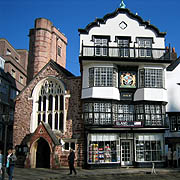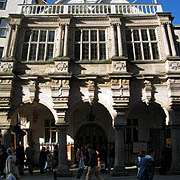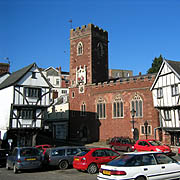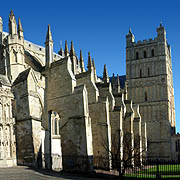
Exeter, Devon
 |
 |
 |
 |
The city of Exeter is the county town of Devon in the South West of England. It began life as the only sizeable Roman town in the West Country, known as Isca Dumnoniorum. Later, it may have been an important centre for the Kings of Dumnonia (alias Devon). There was certainly a Celtic monastery there attended by St. Boniface. St. Sidwell was also an Exeter girl. By about AD 805, the Saxons were in control and called it 'Exe-Caster'. Viking armies passed through in the 9th and 11th centuries. In 1050, the abbey became a cathedral. The present building was begun in 1114. The city was besieged by both William the Conqueror and King Stephen. The former built Rougemont Castle there. The city was always an important port, exporting mostly wool, until the Countess of Devon built a weir across the River Exe in the 13th century. So a canal was built around it in 1566. In 1549, the city held out against a siege by the Prayer Book Rebels. Sections of the city walls survive but, unfortunately, the great gates were demolished in the 18th century. Despite terrible bombing in WW2, Exeter retains many medieval and Tudor buildings, including a 15th century guildhall.
The pictures on this page are cropped examples of images in our high resolution photo library. Please e-mail us for details of these or similar image availability at our very reasonable reproduction rates.